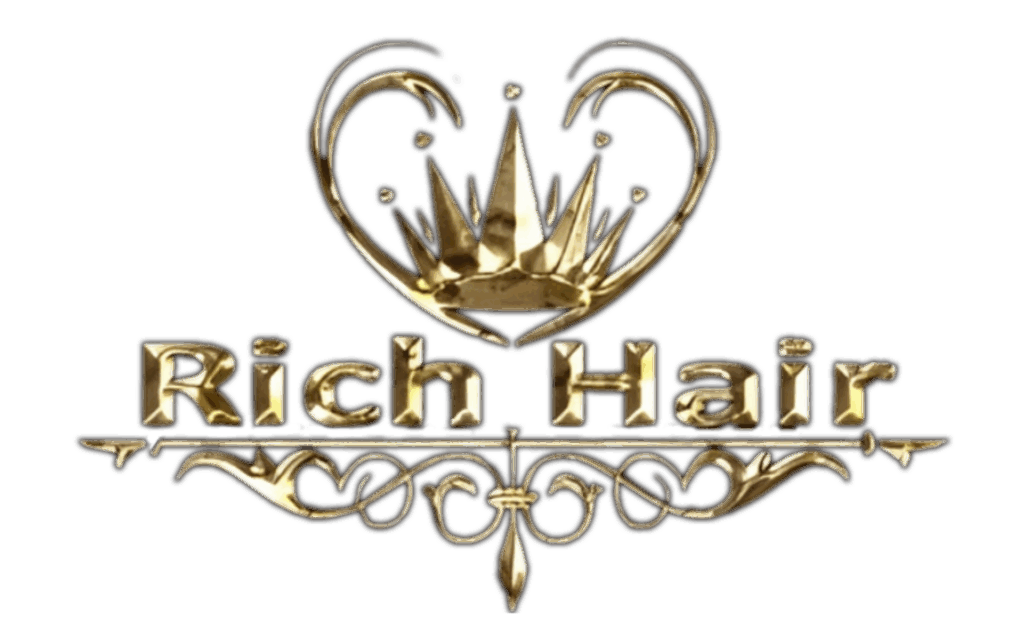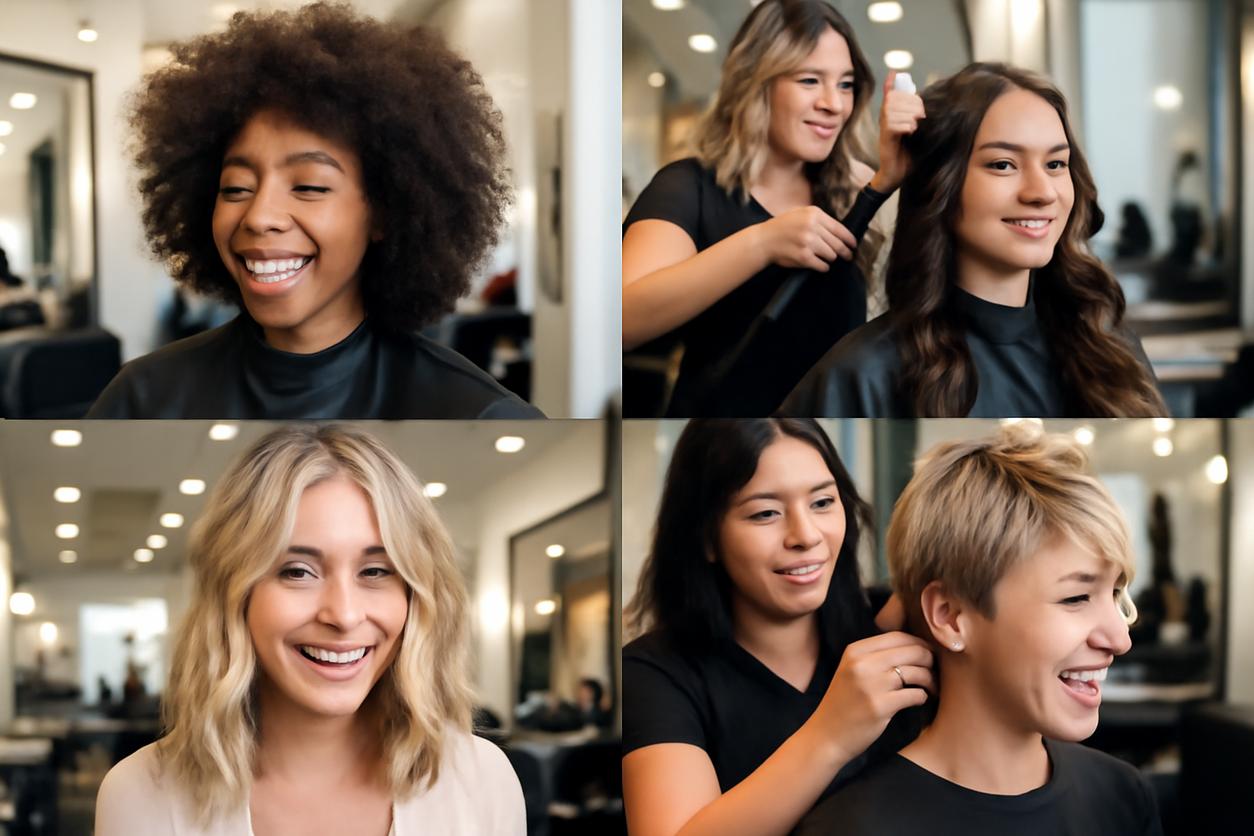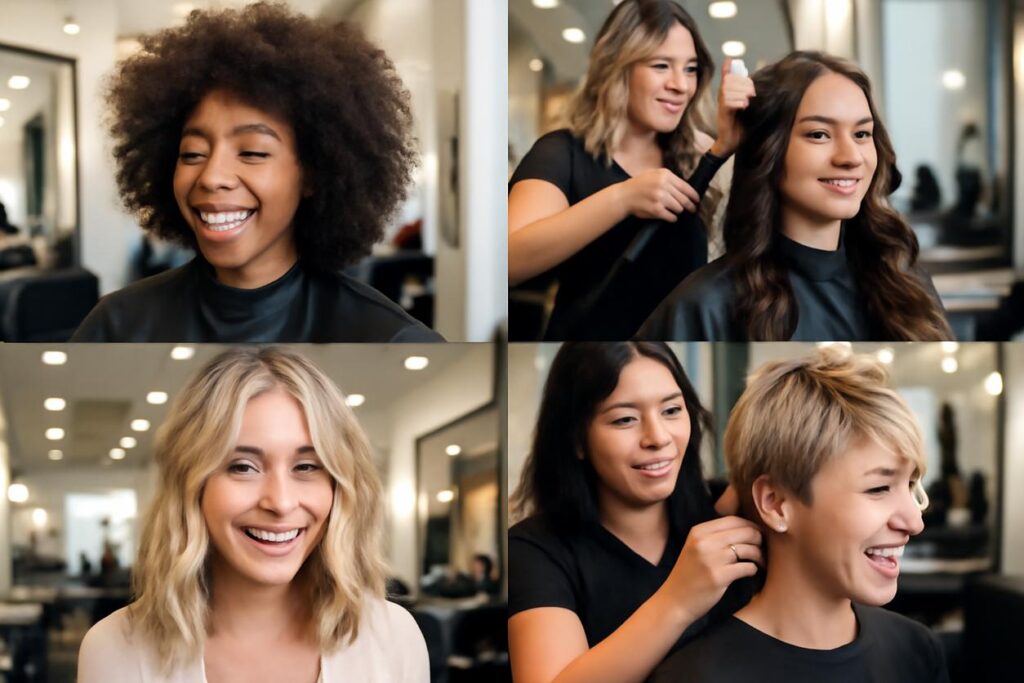Table of Contents
- Introduction: Understanding Hair Loss and What You Can Influence
- Identify the Cause: The First Step in Prevention
- Nutrition for Resilient Hair: Building Strong Strands from Within
- Scalp Care Essentials: The Foundation for Healthy Hair
- Your Everyday Haircare Routine: Gentle Does It
- Styling Habits to Avoid for Hair Preservation
- Safe Home Remedies and DIY Masks (With Evidence Notes)
- When to Seek Medical Advice: A Professional Perspective
- Monitoring Your Progress: How to Track Your Prevention Efforts
- Common Hair Loss Myths Debunked
- Your Hair Prevention Program: A Step-by-Step Plan for 2025 and Beyond
- Conclusion: Sustainable Habits for Long-Term Scalp Health
Introduction: Understanding Hair Loss and What You Can Influence
Noticing more hair on your brush or in the shower drain can be unsettling. For many, this brings up the question of how to prevent hair loss before it becomes a significant concern. The good news is that you have more influence than you might think. Hair loss is a complex issue, but understanding its fundamentals is the first step toward effective prevention.
Every hair on your head goes through a three-phase cycle: the anagen (growth) phase, the catagen (transition) phase, and the telogen (resting) phase. At the end of the telogen phase, the hair sheds to make way for a new one. It’s normal to lose 50 to 100 hairs a day as part of this natural process. Hair loss becomes a concern when this cycle is disrupted—when more hairs enter the resting and shedding phases than the growing phase, or when the hair that grows back is thinner and weaker. This guide focuses on a prevention-first program, combining scalp rituals, targeted nutrition, and gentle home routines to maintain a healthy hair growth cycle.
Identify the Cause: The First Step in Prevention
Effective hair loss prevention starts with understanding the potential triggers. While you can’t change your genes, you can influence many other factors that contribute to hair thinning.
Genetics and Hormones
The most common cause of hair loss is androgenetic alopecia, also known as male or female pattern baldness. This is a hereditary condition linked to an inherited sensitivity to a byproduct of testosterone called dihydrotestosterone (DHT). Hormonal changes, such as those during pregnancy, menopause, or due to thyroid issues, can also trigger temporary hair shedding.
Health and Lifestyle Factors
Your overall health is directly reflected in your hair. Several factors can disrupt the hair growth cycle and lead to a type of shedding called telogen effluvium:
- Nutritional Deficiencies: A lack of essential vitamins and minerals like iron, zinc, and biotin can starve hair follicles.
- High Stress Levels: Chronic stress can push a large number of hair follicles into the resting phase, leading to noticeable shedding months later.
- Medical Conditions: Autoimmune diseases, scalp infections, and chronic illnesses can all contribute to hair loss.
- Medications: Certain medications can have hair loss as a side effect.
Nutrition for Resilient Hair: Building Strong Strands from Within
A balanced diet is a cornerstone of any strategy for how to prevent hair loss. Hair follicles are made of rapidly dividing cells that require a steady supply of nutrients to grow strong, resilient hair. For more in-depth information, you can explore a wealth of hair nutrition research available through scientific databases.
Key Nutrients for Hair Health
Focus on incorporating these essential building blocks into your daily meals:
- Protein: Since hair is primarily made of a protein called keratin, adequate intake is crucial. Good sources include lean meats, fish, eggs, beans, and lentils.
- Iron: Iron deficiency (anemia) is a major cause of hair loss, particularly in women. Include spinach, red meat, lentils, and fortified cereals in your diet.
- Zinc: This mineral plays a vital role in hair tissue growth and repair. Find it in oysters, beef, pumpkin seeds, and lentils.
- Biotin (Vitamin B7): Biotin deficiency is linked to hair loss. It’s found in eggs, nuts, seeds, and sweet potatoes.
- Vitamin C: This antioxidant helps your body absorb iron and produce collagen, a protein that strengthens hair. Berries, citrus fruits, and bell peppers are excellent sources.
- Omega-3 Fatty Acids: These healthy fats support scalp health. Sources include fatty fish like salmon, walnuts, and flaxseeds.
Meal Ideas for a Hair-Friendly Diet
Consider a breakfast of Greek yogurt with berries and walnuts, a lunch of lentil soup with a side of spinach salad, and a dinner of baked salmon with sweet potatoes and broccoli. This combination provides a powerful mix of the nutrients your hair needs to thrive.
Scalp Care Essentials: The Foundation for Healthy Hair
A healthy scalp is the garden from which your hair grows. Neglecting it can lead to inflammation, clogged follicles, and poor growth. Implementing a dedicated scalp care routine is a proactive step in hair loss prevention, a concept supported by various scalp care studies.
Cleansing and Exfoliation
Just like the skin on your face, your scalp needs regular cleansing to remove dirt, oil, and product buildup. Use a gentle, sulfate-free shampoo that cleans without stripping natural oils. Once a week, consider a gentle exfoliation to remove dead skin cells and promote cell turnover. You can use a dedicated scalp scrub or make a simple one with sugar and a carrier oil.
Improving Scalp Circulation
Good blood flow delivers oxygen and essential nutrients to your hair follicles. A daily scalp massage is an easy and effective way to boost circulation. Using the pads of your fingers, apply gentle to medium pressure and massage your entire scalp in small, circular motions for 3-5 minutes. This not only benefits your follicles but also helps relieve stress.
Your Everyday Haircare Routine: Gentle Does It
How you handle your hair daily can significantly impact its health and longevity. Aggressive habits can cause breakage and weaken the hair shaft, making it more prone to falling out.
Washing and Conditioning
Wash your hair as often as needed, but always be gentle. Focus shampoo on the scalp and let the suds run down the lengths of your hair. Follow with a conditioner, concentrating on the mid-lengths and ends to restore moisture and reduce friction between strands.
Brushing and Drying Techniques
Wet hair is fragile. Avoid aggressive brushing when it’s wet. Instead, use a wide-tooth comb or your fingers to detangle, starting from the ends and working your way up to the roots. When drying, pat and squeeze your hair with a soft microfiber towel instead of rubbing it vigorously. If possible, let your hair air-dry most of the way before using any heat.
Styling Habits to Avoid for Hair Preservation
Certain styling practices can put immense stress on your hair and follicles, directly contributing to breakage and loss.
The Trouble with Heat and Chemicals
Frequent use of high-heat tools like flat irons, curling wands, and blow dryers can damage the protein structure of your hair, leaving it brittle and weak. Similarly, chemical treatments like bleaching, perming, and relaxing can compromise hair integrity. If you must use them, do so sparingly and always apply a heat protectant spray.
Traction Alopecia: The Danger of Tight Hairstyles
Hairstyles that constantly pull on the hair follicles—such as tight ponytails, braids, or buns—can lead to a type of hair loss called traction alopecia. The persistent tension damages the follicles, and over time, the hair may stop growing back in those areas. Opt for looser styles and give your hair breaks from any pulling tension.
Safe Home Remedies and DIY Masks (With Evidence Notes)
While not a substitute for medical treatment, some home remedies may support scalp health and complement your prevention strategy.
- Rosemary Oil: Some studies have suggested that rosemary oil, when diluted and massaged into the scalp, may be as effective as minoxidil (a common hair loss treatment) in promoting growth by improving circulation.
- Green Tea Rinse: The compounds in green tea may help support healthy hair growth. After shampooing, try rinsing your hair with cool, brewed green tea as a final step.
- Aloe Vera Mask: Aloe vera can soothe the scalp and condition hair. Apply pure aloe vera gel to your scalp and hair, leave it on for 30 minutes, and then rinse.
When to Seek Medical Advice: A Professional Perspective
A proactive home routine is excellent for prevention, but it’s important to know when to consult a professional. If you experience sudden, patchy, or unusually rapid hair loss, it’s time to see a doctor or dermatologist. They can help diagnose the underlying cause and recommend appropriate treatments. For a comprehensive overview of conditions and treatments, the NHS Hair Loss Guide is a reliable resource.
Common Tests and Treatment Options
A doctor may perform a pull test, take a scalp biopsy, or order blood tests to check for thyroid issues, vitamin deficiencies, or hormonal imbalances. Based on the diagnosis, they may discuss options ranging from topical treatments and prescription medications to therapies and procedures.
Monitoring Your Progress: How to Track Your Prevention Efforts
Patience is key when it comes to hair health. Growth is a slow process, and it can take several months to see noticeable changes. Setting realistic expectations is crucial for staying motivated.
Using Photo Logs
Take clear, well-lit photos of your scalp and hairline from the same angles once a month. This visual record is a much more reliable way to track progress than relying on memory. Note any changes in density, texture, or shedding levels in a journal.
Realistic Timelines and Expectations
It can take 3 to 6 months of consistent effort to notice a decrease in shedding and the first signs of new growth. True, visible improvement in density may take a year or more. The goal is stabilization and gradual improvement, not an overnight transformation.
Common Hair Loss Myths Debunked
Misinformation about hair loss is rampant. Let’s clear up a few common myths:
- Myth: Wearing hats causes baldness. As long as your hat isn’t excessively tight, it won’t cause hair loss.
- Myth: Frequent washing causes hair loss. The hairs you see in the drain were already in the shedding phase. Cleanliness is vital for a healthy scalp.
- Myth: Cutting your hair makes it grow back thicker. A haircut doesn’t affect the follicle beneath the scalp. It only removes damaged ends, which can make hair appear fuller and healthier.
Your Hair Prevention Program: A Step-by-Step Plan for 2025 and Beyond
Here is a practical plan for anyone asking how to prevent hair loss. This structured approach helps build sustainable habits.
Two-Week Starter Plan
This plan is designed to kickstart your new routine without feeling overwhelming.
| Action | Frequency |
|---|---|
| Daily Scalp Massage | 5 minutes every evening |
| Incorporate One Hair-Healthy Food | Daily (e.g., handful of walnuts, spinach in a smoothie) |
| Switch to Gentle Hair Handling | Immediately (wide-tooth comb, pat-dry towel) |
| Avoid Tight Hairstyles | For the full two weeks |
Three-Month Prevention Routine
After the initial two weeks, build on your progress with this comprehensive routine:
- Daily: Continue with your 5-minute scalp massage and mindful, hair-healthy eating.
- Weekly: Perform a gentle scalp exfoliation. Apply a nourishing hair mask or home remedy. Take your monthly progress photo.
- Monthly: Assess your progress. Are your habits becoming second nature? Is your hair feeling stronger? Adjust your routine as needed.
- As Needed: Use heat styling sparingly and always with protection. Opt for loose, comfortable hairstyles most of the time.
Conclusion: Sustainable Habits for Long-Term Scalp Health
Learning how to prevent hair loss is not about finding a single magic bullet. It’s about adopting a holistic and sustainable approach that nurtures your hair from the inside out and the outside in. By focusing on a nutrient-rich diet, gentle handling, and dedicated scalp care, you create the optimal environment for strong, healthy hair growth. Consistency is your greatest ally. Embrace these practices as a long-term investment in your health and confidence, and you will be well-equipped to maintain a full, healthy head of hair for years to come.





